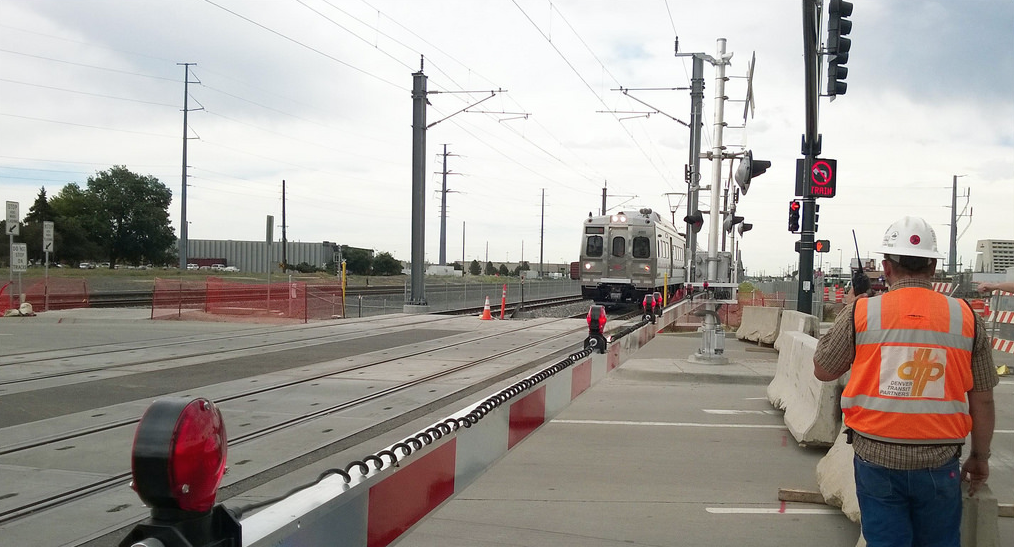RTD Will Need Federal Clearance to Operate A and B Lines Past November 5

The Regional Transportation District’s A and B lines are on thin ice with the Federal Railroad Administration.
If RTD and Denver Transit Partners, the consortium of companies that designed, built, and operate the A and B lines, don’t make “significant progress” on the commuter rail’s defective crossing arms by November 5, the FRA could shut them down until the safety problems are fixed, according to RTD officials.
“We believe the system is operating safely and we err on the side of caution,” RTD officials wrote in a statement.
The stop arms are supposed to rise and fall automatically at intersections to block people and cars from crossing when a train passes — and to allow them to cross when the tracks are clear — but a software glitch has prevented them from functioning reliably. Sometimes the arms come down too early and stay down, delaying cross traffic. Other times they don’t drop, endangering everyone.
Because the stop arms aren’t reliable, RTD has had to station flaggers at train crossings to control traffic.
The situation threatens RTD’s federal authorization to operate the commuter rail, which has been extended through a series of short-term waivers granted by the FRA. If RTD and its private partners make enough headway on the problem, the FRA will allow operations to continue. If not, a shutdown would be the worst case scenario, said Nate Currey, an RTD spokesperson.
“If for some reason Denver Transit Partners’ efforts do not meet the requirements, then the conversation would take place as far as an altered waiver or some type of an exception, all the way up to us having to shut down,” Currey said. “That’s not really in anybody’s best interest.” RTD and DTP have contributed extra money and resources to get the job done.
RTD has already charged the consortium $1.1 million for the defective gates, according to the Denver Business Journal. The agency may also delay the opening of the G-Line, which has the same crossing technology, until the problem is solved.
The media has panned the “train to the plane” since it opened in April because of delays caused in part by the broken crossings. It is only on time 87 percent of the time. Yet ridership has consistently climbed since it opened in April. About 18,800 people ride the A-Line each weekday, which is more than RTD projected for its first year in operation.
The B-Line to and from Westminster is performing better, with an on-time rating of 96 percent. It averages 1,400 weekday trips, nearly double RTD’s projections.
An earlier version of this article erroneously stated that the A-Line’s ridership was 18,000 per weekday.


